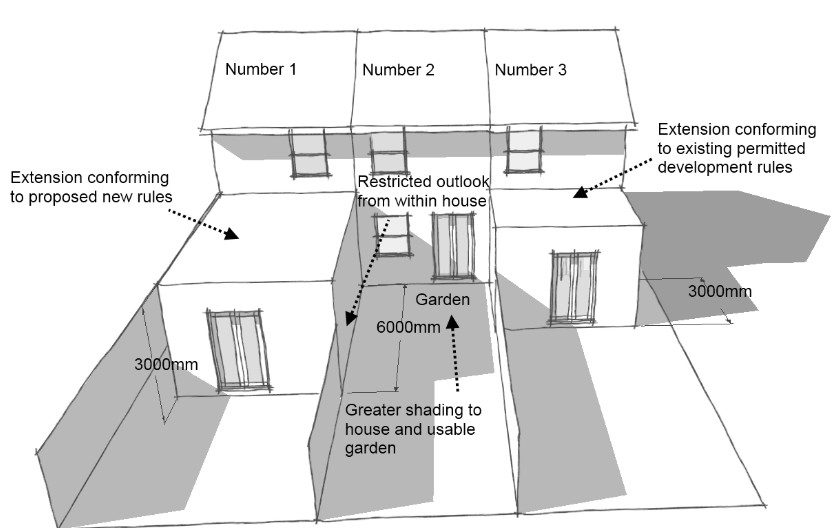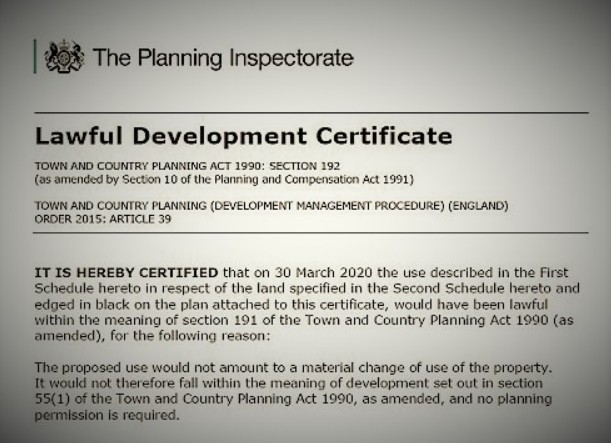When it comes to extending your home, many homeowners wonder how far they can go without needing to apply for planning permission. This is especially relevant for semi-detached properties, where the proximity to neighbors and shared boundaries can raise concerns. In this blog, we’ll dive deep into how far can you extend without planning permission for semi-detached homes in the UK, covering key regulations, potential issues, and helpful insights to ensure you’re compliant with local planning rules.
What Does ‘Planning Permission’ Mean for Home Extensions?
Before we explore the specifics of extending your semi-detached home, let’s first clarify what planning permission is and why it’s necessary.
Key Takeaways:
- Planning permission is the legal process required for most building projects, ensuring they are safe, suitable, and in line with local development guidelines.
- You usually need planning permission if your extension affects the structural integrity, appearance, or size of your home.
- Different rules apply to semi-detached homes due to shared boundaries with neighbours.
How Far Can You Extend Without Planning Permission for Semi-Detached Homes?

For semi-detached homes, the rules on how far you can extend without needing planning permission depend on various factors, including the type of extension and where your property is located. In general, if your extension meets certain criteria, it may fall under “permitted development,” meaning you won’t need to apply for planning permission.
Permitted Development Rights for Semi-Detached Homes
Here are the basic guidelines on how far you can extend your semi-detached property without needing planning permission:
- Rear Extensions: You can extend up to 3 meters beyond the rear wall of your property if your home is not in a conservation area or subject to other restrictions. For houses with more than one story, the extension cannot extend beyond 3 meters.
- Side Extensions: Side extensions are more restrictive. If you’re extending the side of your semi-detached house, it should not exceed half the width of the original house and should not project beyond the front wall of the original house. Side extensions typically require a more detailed assessment.
- Height Limits: Extensions cannot be higher than the highest part of the roof of your existing house, unless certain conditions are met.
Extension Size Guidelines
| Extension Type | Permitted Development Limit | Planning Permission Required? |
| Rear Extensions (Single Story) | Up to 3 meters | No (If within limits) |
| Side Extensions | Half the width of the house | Yes (If exceeds limits) |
| Front Extensions | Varies | Yes |
| Two-Story Extensions | N/A | Yes |
This table gives a quick overview of typical extension limits for semi-detached homes in the UK.
Why Do Semi-Detached Homes Have Specific Rules for Extensions?

Semi-detached homes are unique in that they share one wall with another property, which introduces additional considerations:
Key Points:
- Impact on Neighbors: Extensions must not obstruct light, privacy, or views of neighboring homes.
- Boundary Agreements: If your boundary lines with the neighboring property are unclear or contested, you may face additional restrictions.
- Aesthetic Concerns: Planning authorities aim to ensure that extensions preserve the character and aesthetic of the area.
What Factors Could Lead to the Need for Planning Permission for Your Extension?
Even if your extension appears to fall within permitted development, there are still cases where planning permission may be required:
- Conservation Areas: If your property is located in a conservation area, stricter rules apply.
- Listed Buildings: Listed buildings or properties within the curtilage of a listed building may face additional restrictions.
- Exceeding Size Limits: If your extension exceeds the size limits defined under permitted development, you will need planning permission.
- Neighbor Disputes: In some cases, a neighbor may object to your proposed extension, prompting a review of the development.
How to Check If You Need Planning Permission?
If you’re uncertain about whether you need planning permission for your semi-detached home extension, here are a few steps you can take:
1. Consult Local Planning Guidelines:
Your local council’s planning website will have detailed guidelines for extensions, including the specific limits for your area.
2. Request a Lawful Development Certificate:

If you believe your project is within permitted development limits but want confirmation, you can apply for a Lawful Development Certificate. This document confirms that your project complies with planning rules and can save you time in the long run.
3. Seek Professional Advice:
Engage an architect or planning consultant who can provide expert guidance and ensure your plans adhere to local regulations.
What to Do If You Need Planning Permission?
If you determine that you need planning permission, here are the general steps:
Step 1: Submit a Planning Application
Complete the application forms available on your local council’s website. Include details about your extension, including design and materials, and a site plan.
Step 2: Consult with Neighbours
It’s a good idea to speak with your neighbours before applying to ensure they are not opposed to your plans. If your neighbours raise objections, it may impact the application process.
Step 3: Wait for Approval
Once submitted, your application will be reviewed by the local authority. The duration of this process may range from several weeks to a few months. If approved, you can start your construction project.
In Conclusion: Staying Compliant with Regulations
When considering how far you can extend your semi-detached home without planning permission, it’s crucial to be aware of the permitted development rights, local regulations, and any potential restrictions that may apply. While you may be able to extend your property within certain limits, always take the time to verify your plans and ensure they meet the requirements. If in doubt, consulting with a planning professional can save you time and effort.
By following the guidelines and understanding the rules, you can transform your home without encountering legal issues. Always stay informed and compliant to avoid costly mistakes and enjoy a successful home extension project!
FAQ: Common Questions on Home Extensions Without Planning Permission
Can I add a two-story extension to a semi-detached house without planning permission?
No, typically, two-story extensions require planning permission. The height and impact on neighbouring properties need to be carefully considered.
Can I extend the front of my semi-detached home?
Front extensions usually require planning permission, especially if they are more than one story or exceed a certain size.
How do I find out if my property has permitted development rights?
You can check the status of your property’s permitted development rights by contacting your local council or by using an online planning tool.
What happens if I build an extension without planning permission?
Building an extension without planning permission could result in enforcement action by the local council. You may be required to demolish the extension and face potential fines.






